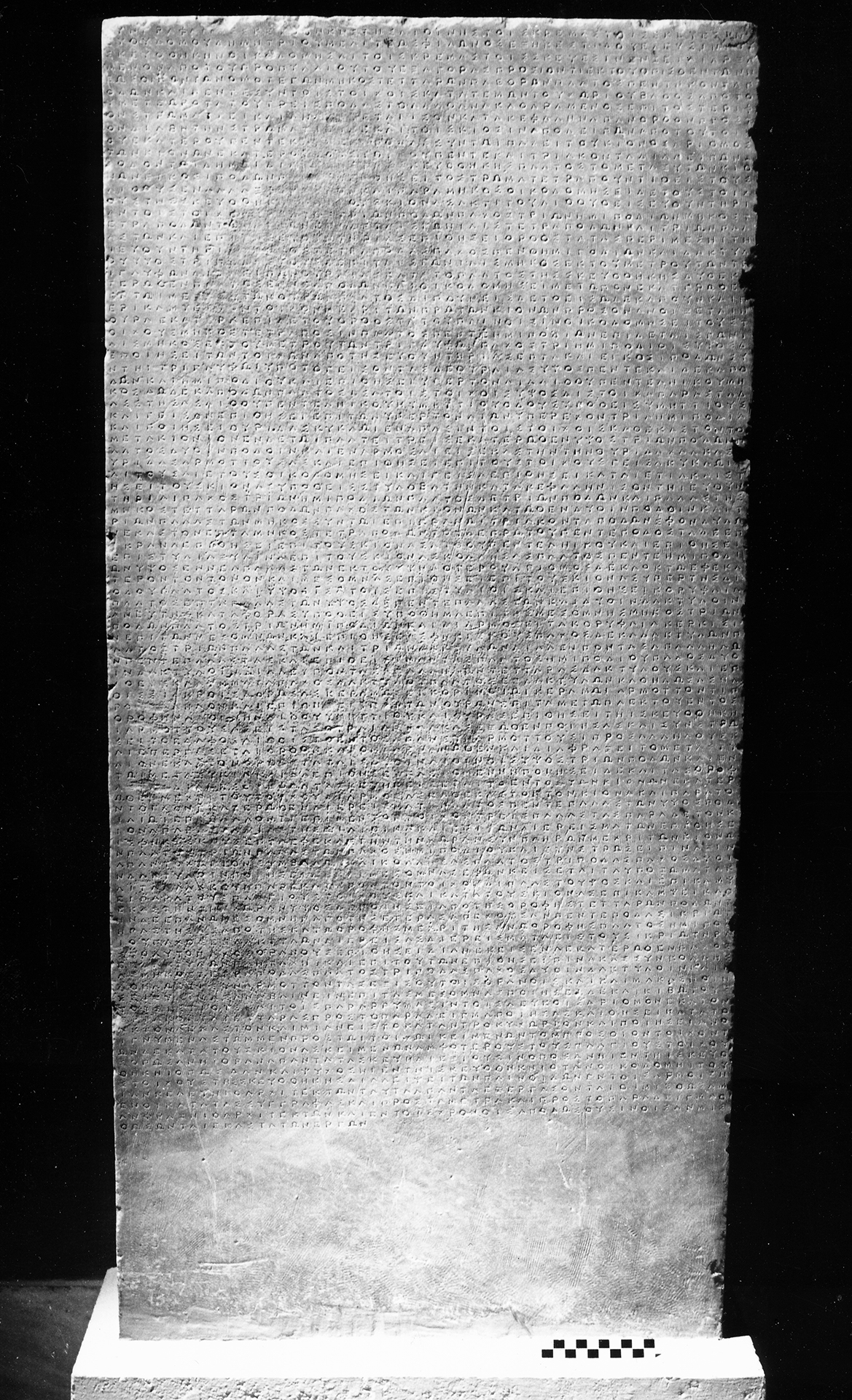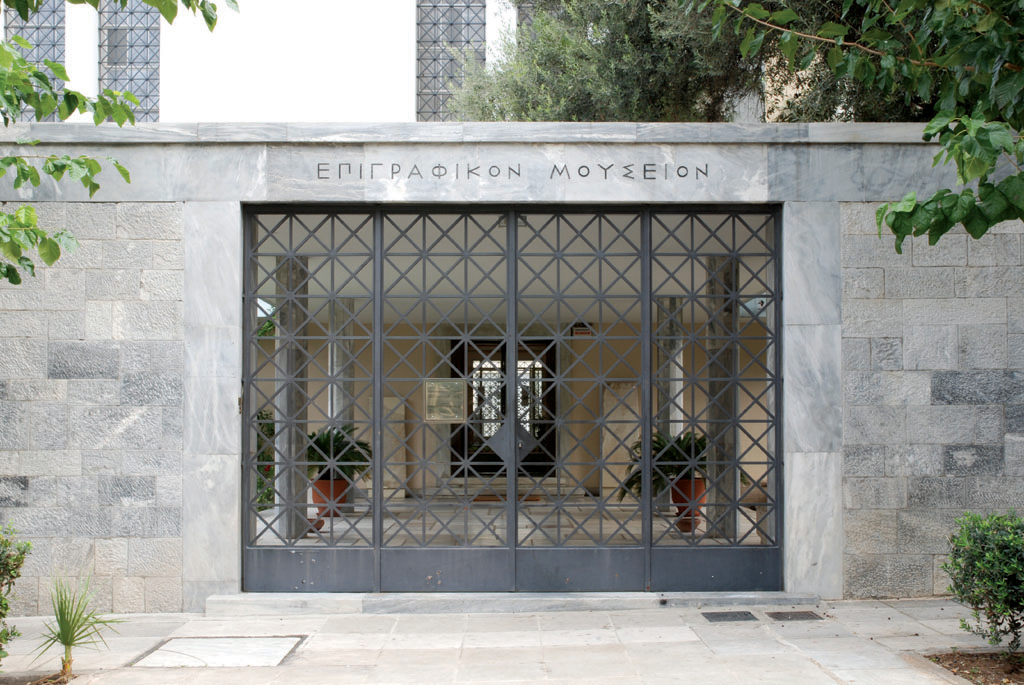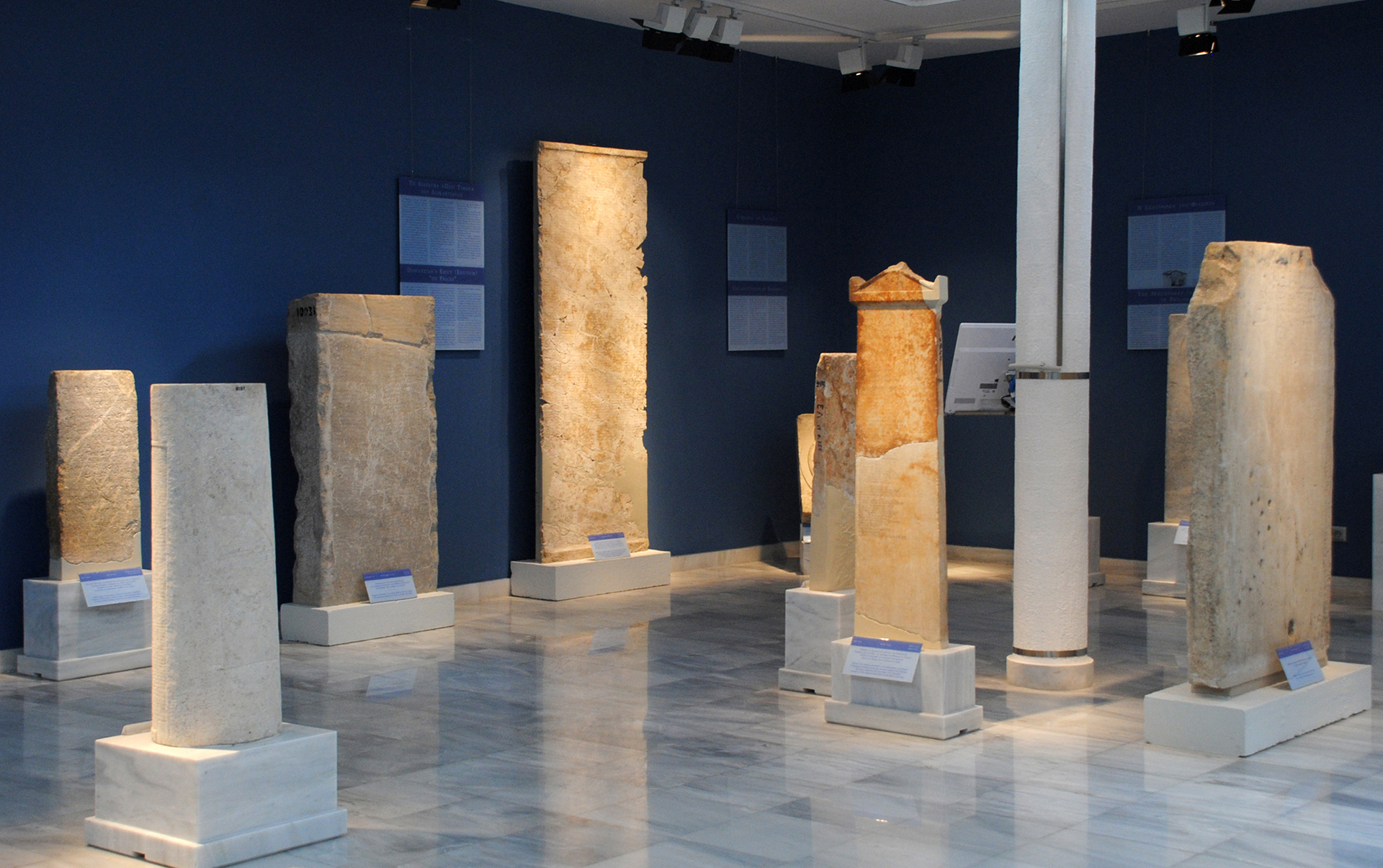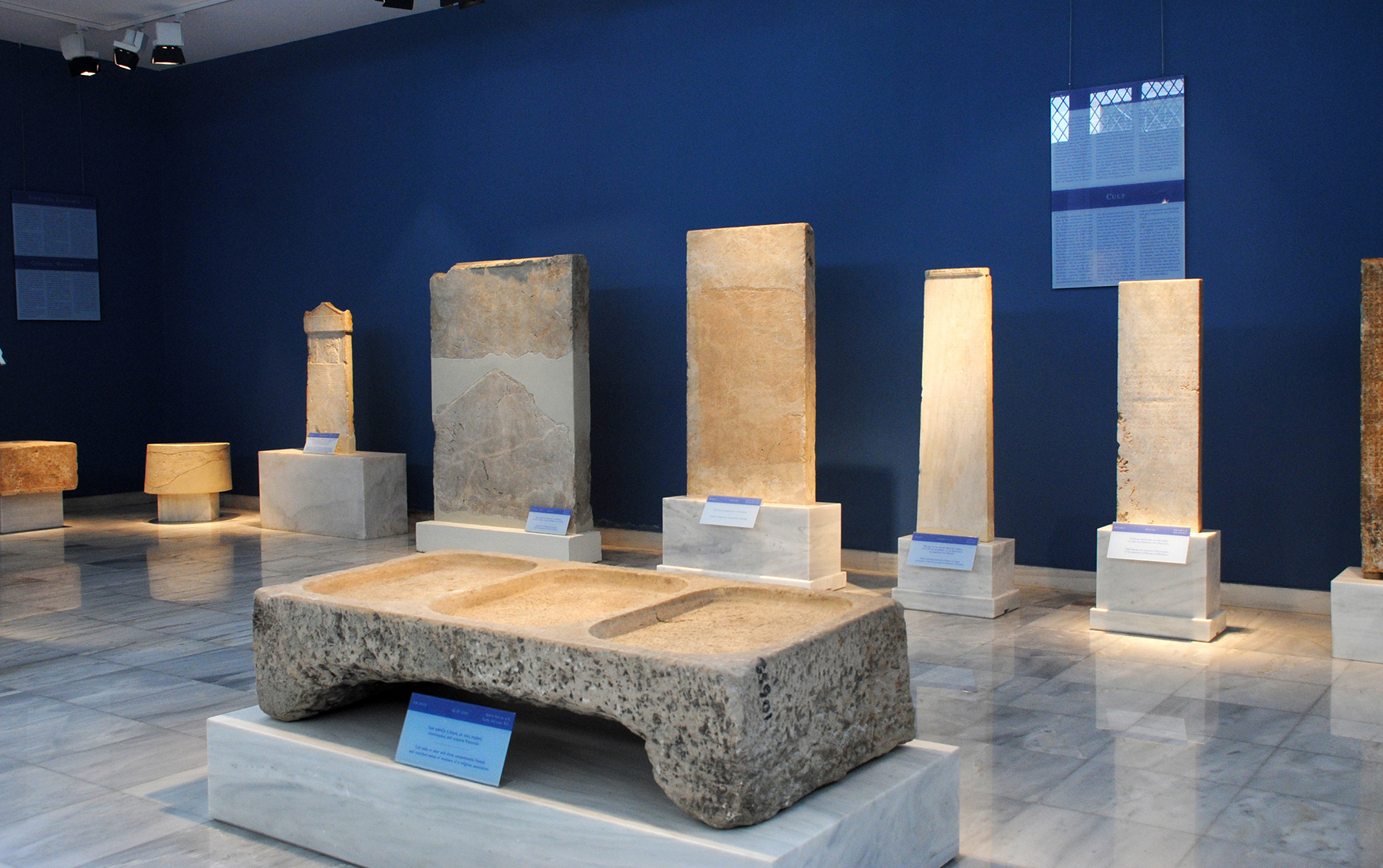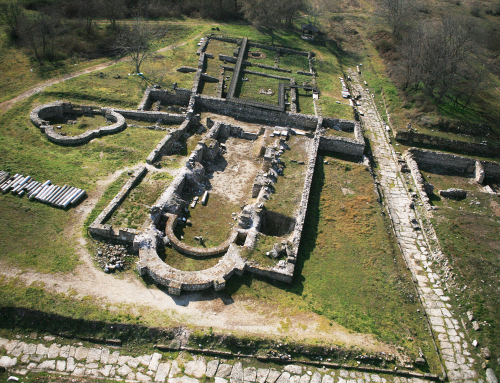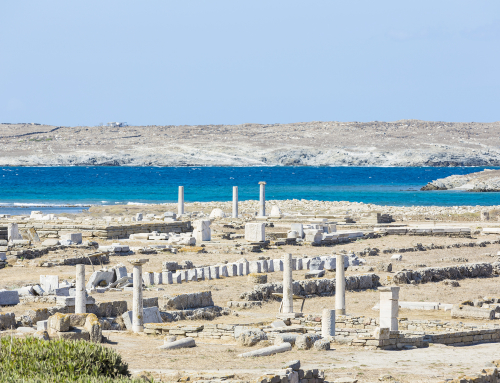The Epigraphic Museum of Athens that is housed in the south side of the National Archaeological Museum was founded in 1885 to enable the protecting, preserving, studying, and exhibiting of ancient inscriptions on stone. It houses the largest collection of ancient Greek inscriptions in the world, on which are written the primary historical sources that provide valuable information for all aspects of the economic, political, religious and social life of antiquity. The majority of these are from Athens and Attica, though there is also a considerable number from the rest of Greece and from Asia Minor. Most of the inscriptions are written in Greek, though some are in Latin and a small number in other languages (Phoenician, Hebrew, and Ottoman). They range from the 8th c. BC to the Early Christian, Byzantine and later times.
The Museum occupies an area of 4.869, 413 m2 and consists of an outer and an inner courtyard, a vestibule, eleven rooms, storerooms, a laboratory of conservation, a library and offices. The areas open to public are the outer courtyard, the vestibule, four of the rooms (1, 2, 9, 11) and the inner courtyard. Next to the Museum is the Centre of Epigraphic Studies that consists of a room for temporary exhibitions and conferences, offices and a library.
The Epigraphic Museum participates in the research program titled “Applications of Situated Simulations” in the frame of the National Action “Research-Create-Innovate” which aims to create an integrated simulation for the promotion of cultural heritage using innovative augmented reality technologies.
This application will be implemented at the Epigraphic Museum based on the information that is provided by the inscribed stele that includes the specifications for the construction of the arsenal of Philon in Peiraeus, the building (dimensions 18x131m.), where the hanging tuckle of the military fleet were stored. The inscription has been found at the N side of the Zea harbor in 1882. It is dated in the 4rth cent. B.C. and is exhibited in gallery 9 of the Epigraphic Museum.
In the inscription are defined the technical specifications (syngraphai) of the structure by the architect Philon, which designed the arsenal, with his collaborator Euthydomos. The architectural features of the building are described with such accuracy, so that a design representation of it was made possible.
In 1988–89 excavations confirmed and defined several points of the inscription. In the NE side of Zea port, the remains of an oblong structure were found, which had such similar features concerning the architectural form and the dimensions of the arsenal, that was no doubt for the identification of the building. It was an oblong rectangular building with a pediment, a doric frieze, a wooden roof and two doors at the two narrow sides. It was divided by two internal rows of pillars in three aisles, two of which were two-storied with shelves for the hanging tuckle of the ships, i.e. ropes, sails, textiles etc.
The decision of Skeuotheke’s construction in the middle of the 4th cent. B.C. was not made only for the needs of the fleet, but also for the re-organisation of Peiraeus’s ship storerooms. The building had deliberately such a great size for the fulfilment of the present, as well for the future needs of the Athenian military port.
The technology of situated simulation will be implemented in gallery 9 or in the inner courtyard of the Epigraphic Museum, so that visitors through a mobile device (smartphone or tablet) can walk around the ancient building of the Skeuotheke, using as a basis a planned outline of the building (scale plan) in the area. With the help of the application the visitor will be able to walk around the building as it was in the past or enter in it, providing a new visiting experience.
Gallery 9
In gallery 9 (blue room) that occupies 182 m2, you will see inscribed monuments from the 6th c. BC to the 4th c. AD, that inform us about several aspects of the public life of ancient people, mainly the Athenians. Of great importance among them is the republication in 409/8 BC of Draco’s Law on homicide, a law that was issued in 621/20 BC, and includes provisions on the crime of involuntary murder, and on justifiable homicide or homicide in self-defence. Another particularly important monument is the decree of the first half of the 3rd c. BC (possibly a copy of an older decree), according to which Themistokles appears to be proposing significant measures to confront the Persian invasion before the naval battle of Salamis (480 BC).
In the same gallery you can see inscriptions for important sectors of public life, such as religious matters, management of the property of the sanctuaries, founding of colonies, construction of public works, bestowing of honours on foreign citizens. You can also see inscriptions related to ephebeia the military training of youths, and choregia, the honorable and sumptuous liturgy that was established in Athens in the 5th century B.C., whereby wealthy Athenians were assigned the financial responsibility of sponsoring and maintaining the chorus of the dramatic performances.
The system of appointing the Athenian officials (archons) by lot, designed to safeguard democratic principles and prevent corruption, was accomplished through an allotment machine, Kleroterion, presented in the same gallery. Finally, on the east wall of this gallery (near the north-east corner) the inscribed stele for the Skeuotheke of Philon is exhibited.
Inner Courtyard
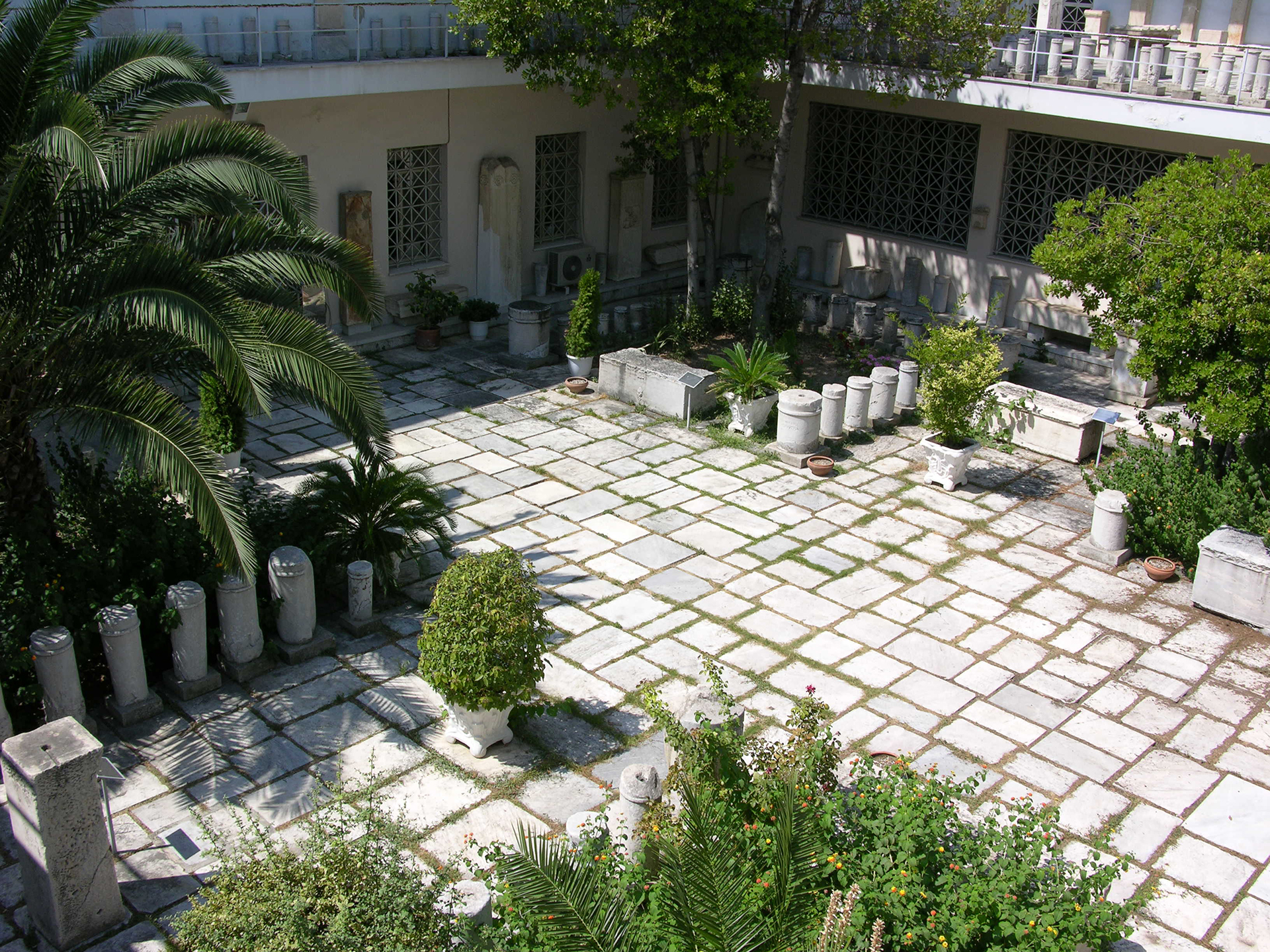
In the inner courtyard that occupies an area of 359,81 m2 (the uncovered space), funerary stelae, colonnettes and marble trapezae (rectangular funerary monuments) are exhibited. Ιn the centre of the inner courtyard there aren’t any exhibits, so there is enough free space, in order to design the outline of the building of Skeuotheke (scale plan).


